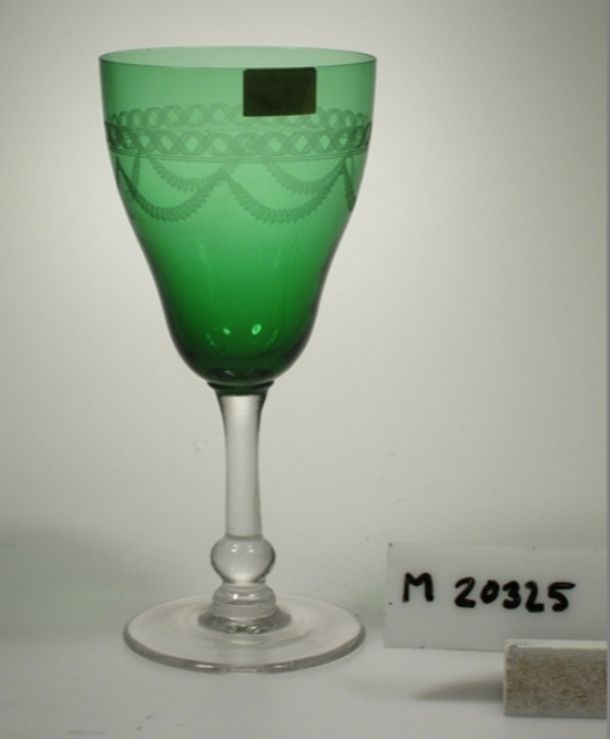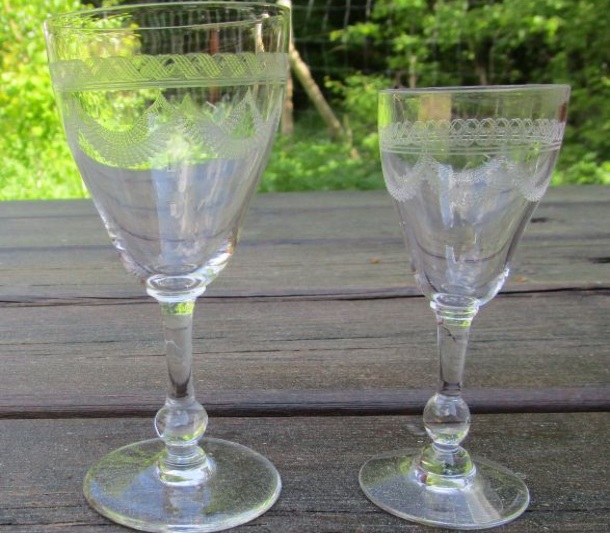In the Kosta catalogues from 1926, 1933, 1940 and 1944 we can find a guilloché service called Lina.
In one of our two pattern books (coming from Kosta) there is a rubbing of a glass.
The pattern s simple but elegant, and has probably been made at several glassworks.
We have unverified information that Skruf also made a service called Lina, which was similar to Kosta's Lina.
The museum has several glasses with this, or similar, pattern - some probably are Lina from Kosta: slightly pear-shaped cup, stem with knop.
The guilloché pattern has a double zigzag border at the top, two straight lines below that, and four lines in the festoons.
Based on the above, we think we have four Lina from Kosta.
In the picture below we have four glasses with four lines in the festoons.
Lina and family
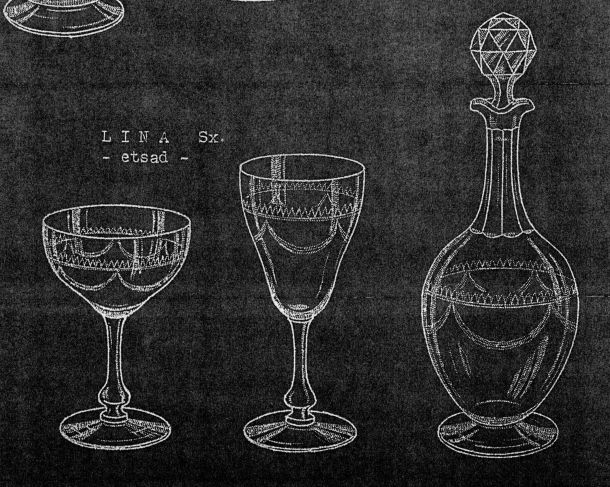
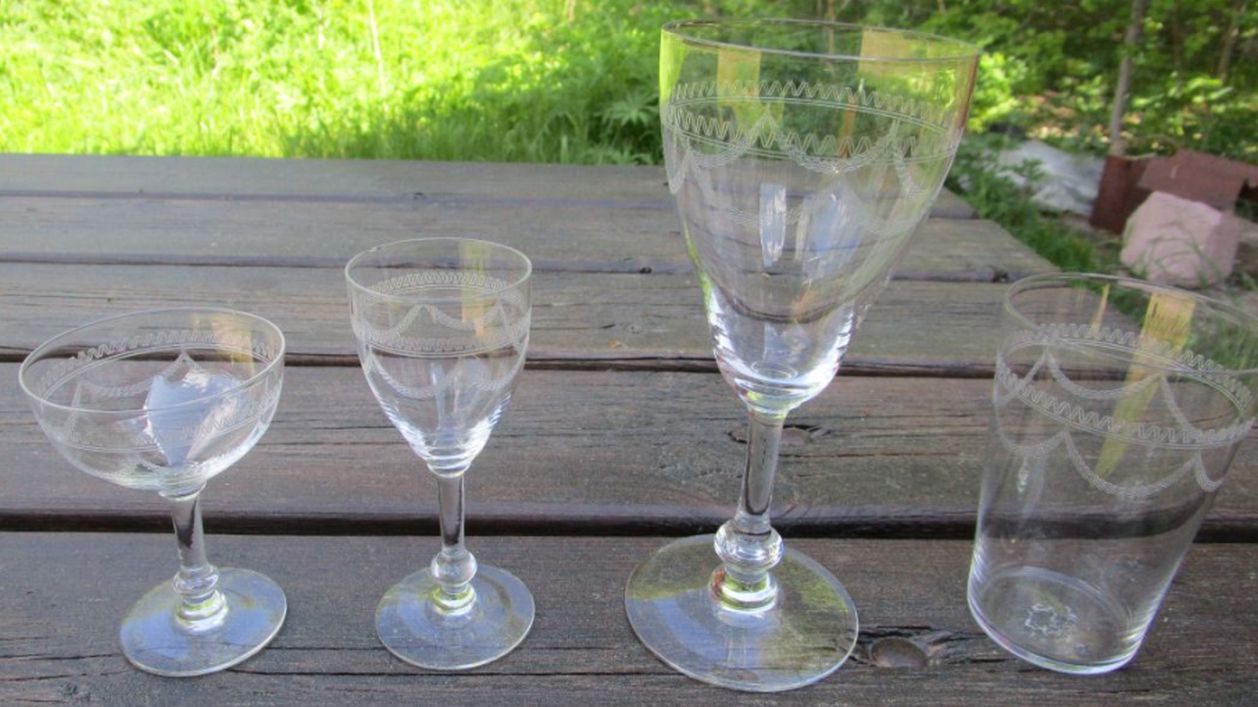
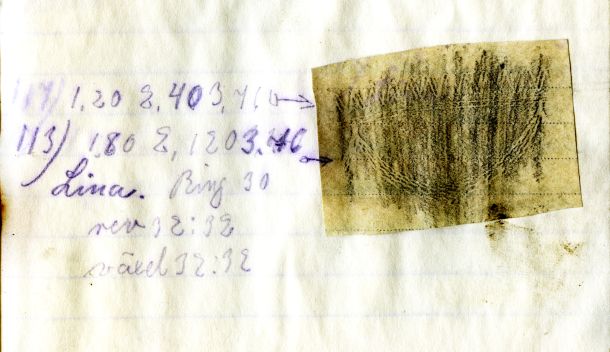
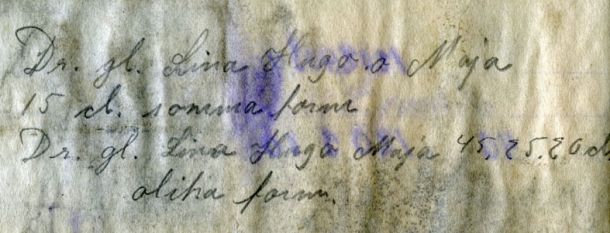
The note says that the services Lina, Hugo and Maja used the same blanks for 15 cl tumblers,
but tumblers in the sizes 45, 25 and 20 cl were different.
Thus: there were tumblers in four different sizes for one service? (Actually three services...)
Thus: there were tumblers in four different sizes for one service? (Actually three services...)
Among our Lina lookalikes we have two with different stems - instead of a knop they have the foot directly on the stem.
The cups are more rounded that the pear-shaped Lina cups. The pattern is nearly the same: double zigzag, two straight lines and festoons - but
the festoons have five lines.
A water glass we own has the same zigzag, five lines in the festoons, and three straight lines in between. This tumbler is bigger than the above.
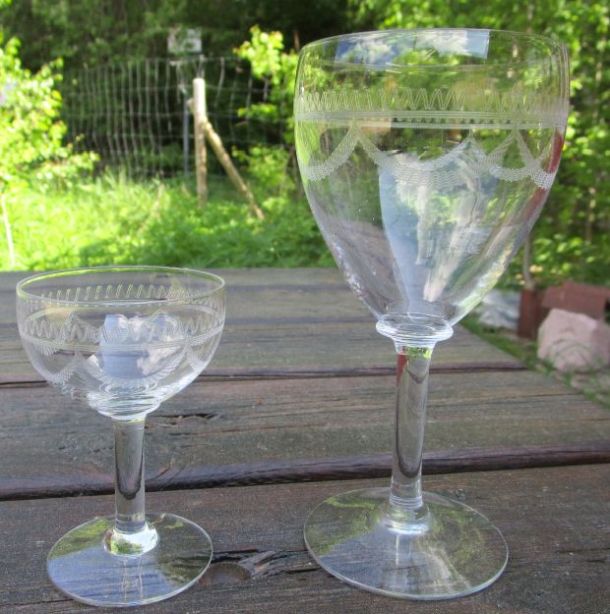
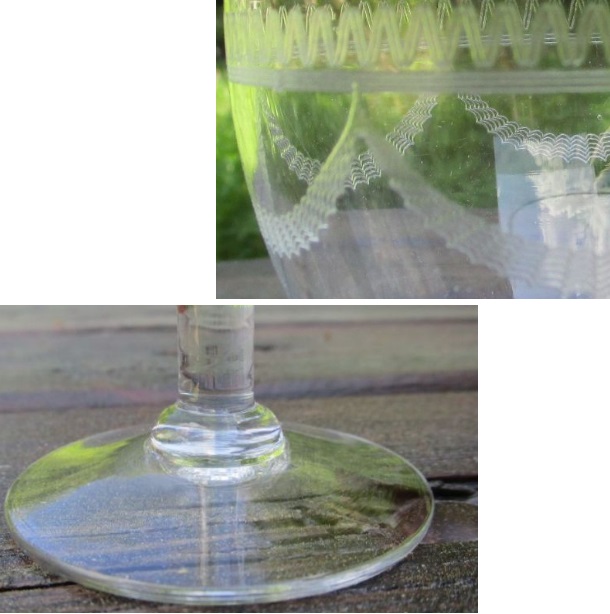
Lastly, we have two small glasses with "correct" Lina stems and pear-shaped cup. The pattern is slightly different: on one, the zigzag
border has four lines (and is rounded), five lines to the festoons; on the other the zigzag is also rounded, but has two lines. There are
four lines in the festoons.
(see below)
To further confuse matters, on Digitalt museum we found a Lina lookalike with a green pear-shaped cup and a rounded two-line zigzag border. This glass is attributed to Sandviks glassworks, the time given is "about 1910".
(picture to the right)
The question becomes: is it at all possible to attribute glasses like these to any specific glassworks? (We have not found any service called Lina, or any lookalikes, in any of the other catalogues we have accession to.)
(see below)
To further confuse matters, on Digitalt museum we found a Lina lookalike with a green pear-shaped cup and a rounded two-line zigzag border. This glass is attributed to Sandviks glassworks, the time given is "about 1910".
(picture to the right)
The question becomes: is it at all possible to attribute glasses like these to any specific glassworks? (We have not found any service called Lina, or any lookalikes, in any of the other catalogues we have accession to.)
